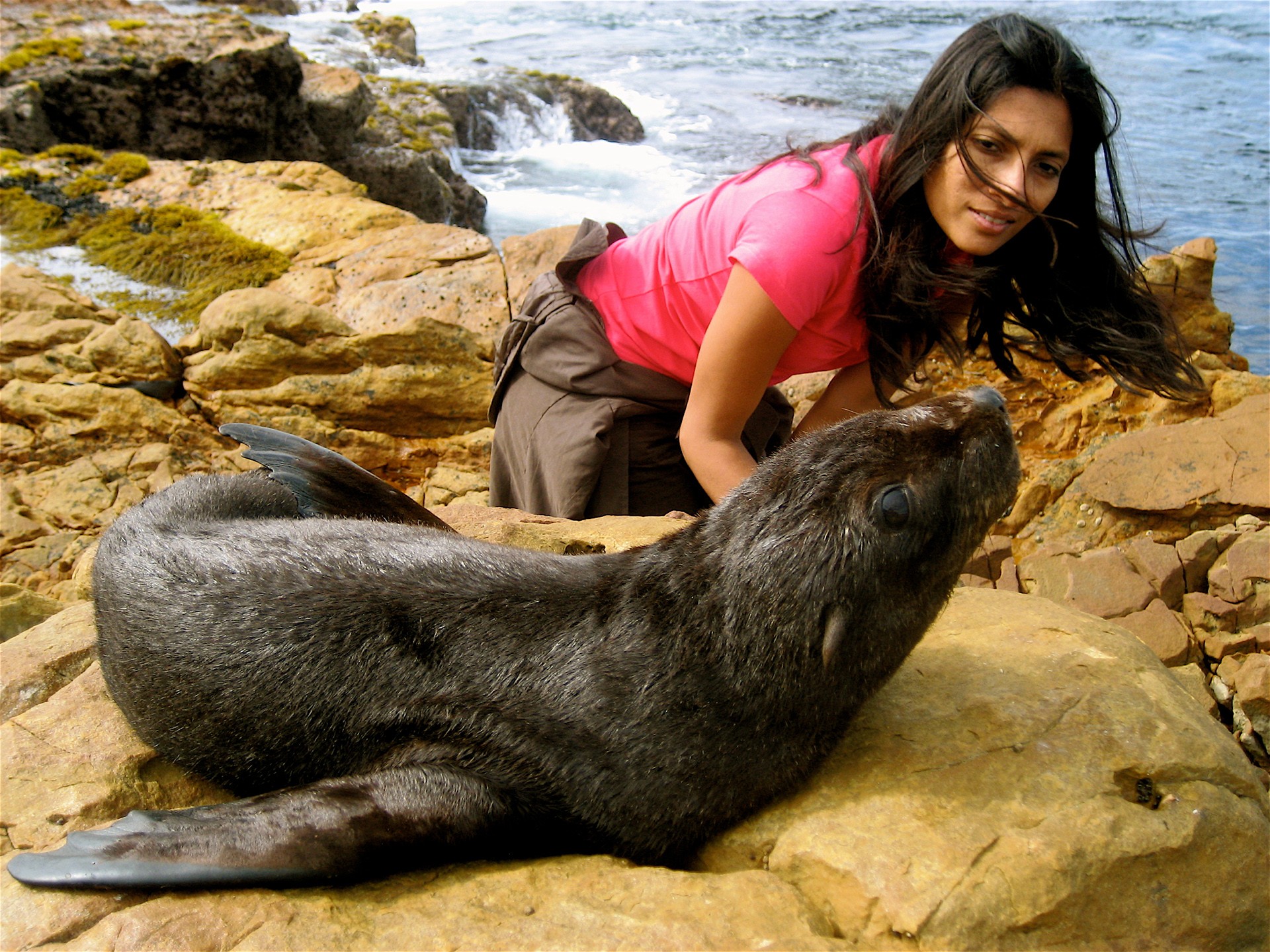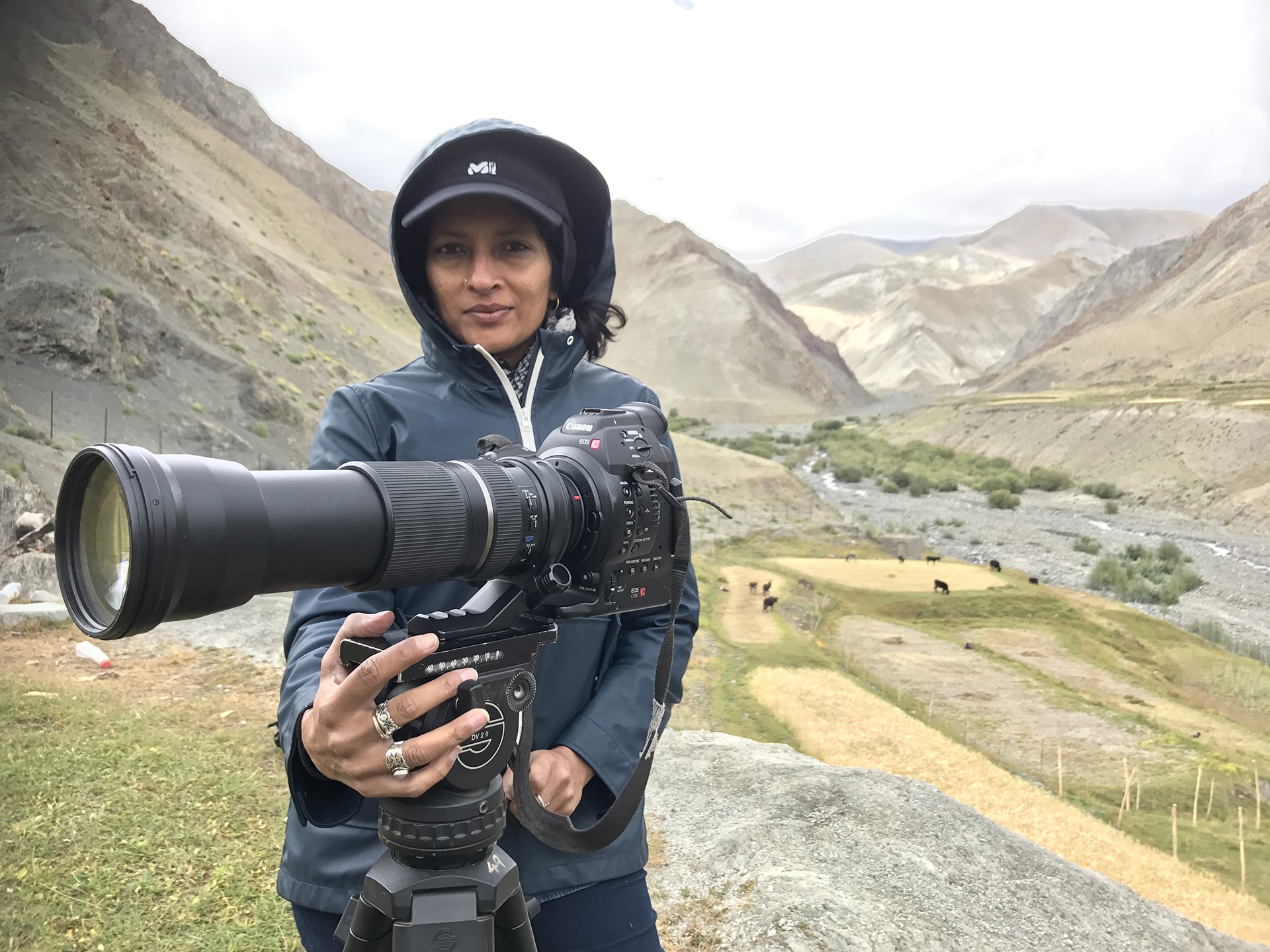While nature and wildlife photography is growing by leaps and bounds in India, the field of environment journalism has evolved more slowly. Swati Thiyagarajan, the environment editor at NDTV, is one of the doyennes of this profession. Born Wild, the show she scripts, directs and presents, is the only conservation show to have had a ten-year run on a news channel.
Thiyagarajan is a two-time winner of the Ramnath Goenka Award for excellence in environment journalism, and she has also been honoured with the Sanctuary Asia Award, Earth Hero Award, Carl Zeiss Award and others, for her reporting on wildlife conservation. She has directed a documentary film titled The Animal Communicator, and recently published a book, Born Wild, in which she writes about the wildlife and conservation efforts she’s encountered in over two decades in the field.
We ask her to share some of her insights.
Your book, Born Wild, was published last year, and marks over two decades of your work in the wild. One of the reviews noted that “with all the depressing environment news in India and the rest of the world, it's commendable that Swati has infused so much positivity into her book.” Why is positivity so important?
As journalists, we have a tremendous responsibility when we report on the environment. We don’t do enough stories on the positive. And when we report the negative side, the angle is often wrong. Look at reports on human-wildlife “conflict”, about people lynching leopards, or leopards killing someone. We get it wrong almost every time. Why aren’t we asking why, in this particular circumstance, did this particular animal, or those particular people react the way they did. What could have been done differently? It’s important that we change the narrative.
It does not mean that we don't look at it realistically. 2017 has perhaps been one of the worst years on record for the environment, at least in India. Globally we are in the sixth mass extinction, weather events are getting unpredictable from climate change and so on, so it’s pretty bad, but if all I do as a reporter is moan about the bad stuff, I feel like I am doing a disservice to the thousands of people studying, working and fighting in the field every day. It's good to look at stories through the lens of solutions. We have the ability to change things; it's sheer apathy and lack of political will that stops us. We need positivity to enable us to act – after all we owe it to future generations.
As a journalist, what are some of the common pitfalls you see in the standard of environment reporting in India?
Well, language is very important. When we report that an animal “strayed”, we forget that these have been shared landscapes for generations. Animals don’t “stray”, it’s their space, and it so happens that increasingly, there are people there too. Words like “killing”, “murdering”, “marauding”, “serial killer” are all problematic – let’s face it, nine times out of ten it is human error that causes the confusion. And our writing doesn’t reflect that.
I’ve been to many places where people have such a deep bond with the wildlife in the region, that in living memory they’ve had no issues. And I’ve been to other places where there is high conflict – there is fear, aggression, and anger on both sides. We have to understand we’re dealing with a sentient being with great intelligence, and it’s picking up on all our signals. The more leopards you beat to death, the more leopards you’ll be in conflict with. And where people understand how it moves, how it lives, and where it sleeps, that animal will also adapt its behaviour to stay away from you. It’s a feedback loop.
What do you think about the boom in wildlife tourism in recent years in India? Does commodifying our wild spaces come at a cost, or is it generally positive for conservation?
One cannot escape the market system. There’s no question, we do commodify nature. Wildlife tourism is important. Of course it’s not about rushing around in a big jeep and getting a photo to show for it – that does nothing. But the general philosophy it brings, the way it gets people to relate and connect to the world around them, is what’s important. If you don’t realise what is out there, why would you feel inspired or compelled to protect it?
But how much this kind of tourism actually helps local environments and communities is a different thing. Take Ranthambore, there are so many cars and jeeps careening around the place chasing a poor tiger. It’s noisy, it’s chaotic – these are things tourists don’t think about. Do you bother to find out if there is rainwater harvesting, if there’s solar power? If you want hot water and a swimming pool on your holiday, where is it coming from? The forest holds that water; it’s being pumped out of Ranthambore. You might not be poaching animals but you could be helping to cause a water crisis. For many tourism outfits, the question is what are they doing to give back to the system? Sure, they provide employment to local people but they can go a step further. Joint partnerships with local people having a stake, conservancies where camping fees go to the locals, homestays…those are better systems, but they’re in the minority right now.
What’s your take on where we are right now with climate change awareness? Is there a disconnect between what’s happening at the research level and the talk on the ground?
India is one of the countries where you do find greater awareness. I’ve found that people are quite aware about it, even in places where you don’t expect them to be. You will find them bringing it up as a reason to explain what’s been going wrong. But, on the other hand, climate change has also become a catchall phrase to explain things and to make claims you need really hard science to back up. It’s not about just pointing to anomalies in weather patterns.
As a conservation journalist, I focus on climate change as a big issue and think everyone should be aware of it, but whenever we exaggerate the reasons or point to cause and effect without hard scientific evidence, we give ammunition to the naysayers and climate deniers to poke holes in the story.
But because it has become the big story my concern is, are we missing the forest for the trees? We have everyday problems staring at us in the face. In Delhi alone, we can’t breathe the air, we have toxic groundwater, we have a dead river – I don’t need global arguments on climate change, I want action on the ground to fix local immediate problems. If we can fix those, the bigger problem will take care of itself. But if all of us sit back and say climate change, it’s paralysing.
In 2012, you made a documentary film about an animal communicator. It’s a topic many people are quite cynical about – did you learn a lot that surprised you?
When it comes to interspecies communication, we know that in the natural world pretty much all species can communicate with each other – that is how things function as a unit. Look at alarm calls, or trees that fruit just in time for a particular little bird, or shrubs that release a toxin when they are being overgrazed… there is constant communication in the natural world. Why are we so resistant to believing the human animal would be part of that conversation? We are very closed to the idea. Everybody operates from their own belief systems and edits out stuff they aren’t comfortable with, but when we lived as hunter-gatherers our survival depended on being able to understand this language.
I set out to make a film to explore the possibilities that people feel uncomfortable talking about – about a sentience we should all be aware of. I didn’t do it to prove you can talk to an animal. I understand the cynicism. But even if you don’t believe in this kind of communication, if you just approach the world around you with greater compassion because you know everything around you has its own intelligence and sentience, it’s a better way to live on this planet.
Swati Thiyagarajan showcased her work at the Nature inFocus Festival, 2017. If you missed it, or would like to listen to her talk, here it is.


